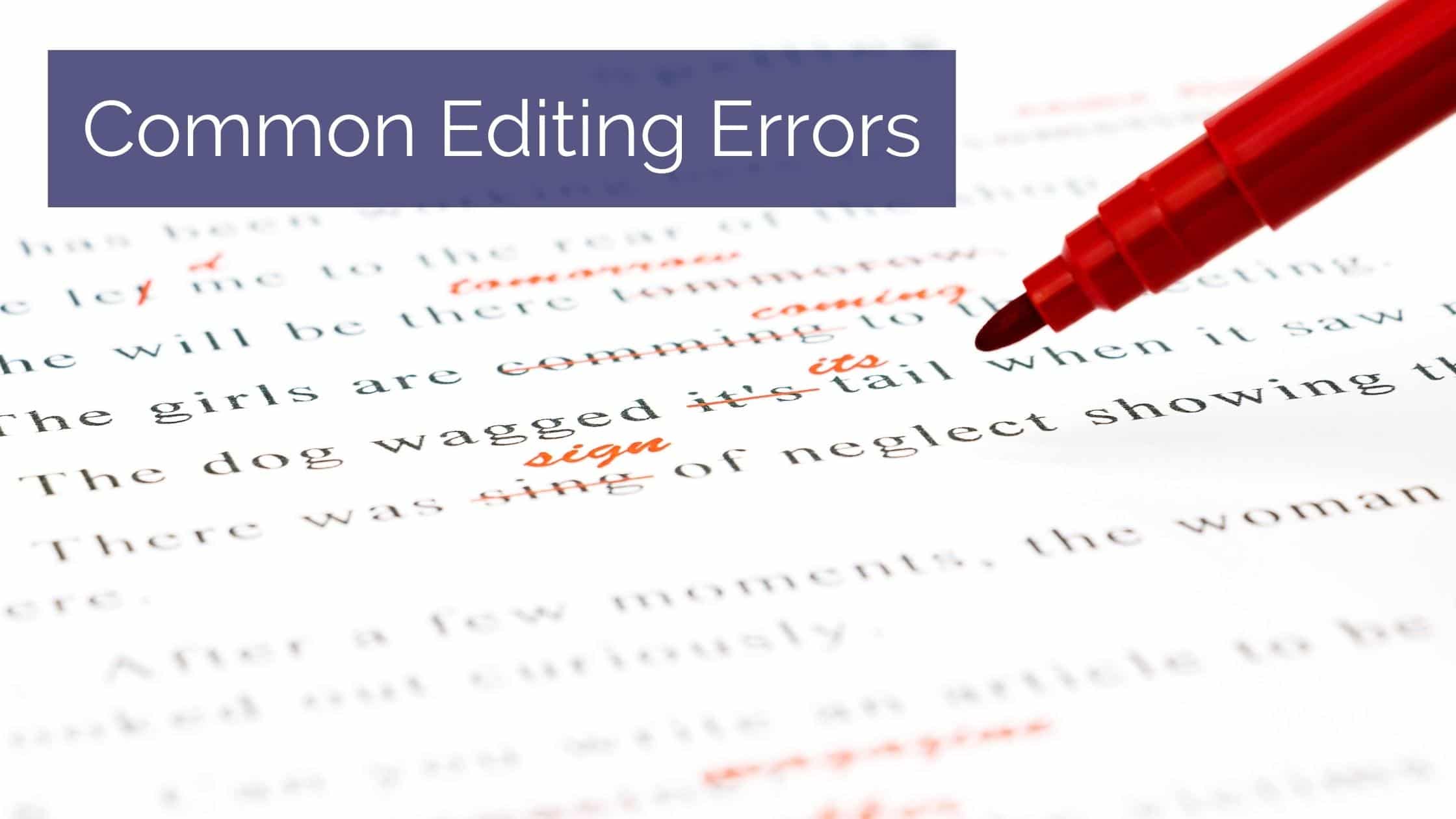How to score 10/10 for Editing
Editing is one section of the ‘N’ and ‘O’ level English language papers. A text is given, spread over 12 lines, and deliberate grammar mistakes are inserted into ten lines (lines 2-11) of this passage.
For the ‘O’ level paper, there are eight mistakes, with a maximum of one mistake in a line. Thus, there will be 2 lines with no mistakes. For the ‘N’ level paper, all lines will contain 1 mistake each.
You are expected to spot these grammar mistakes, circle them, and write the correct word on the right of the line. For ‘O’ level, you should also put a tick beside the two lines with no mistakes.
Take note that each mistake grammar mistake is one word only, and the Editing section is 10 marks in total.
Tips for Editing
Some students find Editing difficult and consistently fail. If you are one of these students, then you should be working on improving your Editing skills. Here are some tips you can implement the next time you do an Editing exercise:
1. Consider the passage as a whole. While you can find mistakes just by looking at sentences individually, there are instances when you need to consider what other parts of the text are saying.
2. Read through the passage twice. For the first time, write down the mistakes you spot in pencil. When you read through it the second time, confirm the errors you have already spotted and do a close reading of the lines you cannot find any mistake. Remember to write your answers with a pen this time.
3. Be familiar with common errors and start focusing on these words to check if there are any errors.
What are some common Editing errors then? I am going to list down four of the most common Editing errors so that you can focus on finding them:
1. Verbs
The most common mistake for Editing is the verb error. Verbs are action words like run, jump and hop. Do identify verb errors, identify all the verbs in the sentence and check if they are suffering from these issues.
(i) Tenses
When you read the Editing passage, note when the information is taking place. If it’s a news article reporting on a past event, then most verbs would be in the past tense form.
However, do be careful as the passage may also talk about events that are currently happening or events that are planned in the future. Furthermore, you also need to be aware that even if the tense is correct, the wrong type of past tense could be used. Look at example 2 for more details.
Let us look at two examples from past year’s papers:
Example 1
“We all wore red and white clothes and sit (sat) down in our seats.” – 2013 ‘O’ Level
Explanation
This sentence clearly describes events in the past (“We all wore red and white clothes”) yet the second verb, “sit” in the present tense. Thus, you need to correct it to “sat”.
Example 2
“I am very lucky because I was borned (born) on August 9th, a special day in Singapore.” – 2013 ‘O’ Level
Explanation
The past tense of “born” is “born”. This is because born is an irregular verb and its past tense form does not change.
(ii) Subject-Verb Agreement
Another common Editing error is Subject-Verb Agreement. Simply put, when the subject of the sentence is singular (one person), then the verb is singular. Singular verbs tend to end with an ‘s’. For example, James runs the restaurant by himself.
If the subject of the sentence is plural (more than one person), then the plural verb is needed. For example, James and Mary run the restaurant together.
To detect this error, find the subject of the sentence and find the corresponding verb to check if they match.
Example 3
“This allow (allows) those waiting for a flight to visit many beautiful places such as the rooftop Cactus Garden and the large Koi Pond.” – 2016 ‘O’ level
Explanation
This is a singular subject (the plural subject would be ‘these’). Thus, the verb should be the singular verb – “allows”.
2. Parts of Speech / Word Form
Different words have different functions or forms in a sentence. These are known as Parts of Speech. Editing errors can also be based on these three parts of speech: Nouns, Adjectives and Adverbs.
For a quick recap, let us look at what they are. Nouns give names to people, objects and concepts (for example, James, school or love). Adjectives are words that describe nouns. For example, red, big or American. Finally, Adverbs give more details on how an action (verb) is carried out. For example, how does one walk? Quickly or slowly?
The error occurs when the wrong word form is used instead. Let us look at some examples:
Example 4
“There are two statues of Raffles in the city, the taller of which shows him with arms folded, looking out proud (proudly) over the Singapore River.” – 2014 ‘O’ Level
Explanation
The word ‘proud’ gives us information on how the statute is looking (this is a verb). Instead of using an adverb, ‘proudly’, the adjective ‘proud’ is used.
Example 5
“He is regarded as the foundation (founder) of Singapore.” – 2014 ‘O’ Level
Explanation
Foundation and founder are both nouns that show Raffles’ pivotal contribution to Singapore. However, “founder” is the correct noun form as “foundation” tend to refer to objects while founder describes Raffles’ role as the person who found modern Singapore.
You should take note that the Adjective / Adverb error is the most common word form error.
3. Pronouns
Another common Editing error is pronoun confusion. What are pronouns? Pronouns can take the place of nouns. They are usually used after the noun has been mentioned. Common pronouns include me, I, which and who.
Here are two examples of this type of error:
Example 6
“I enjoy my birthday tea at my house and my friends and me (I) usually watch the National Day parade on TV.” – 2013 ‘O Level
Explanation
In this sentence, the author and his friends are the subjects of the sentence (they usually watch the National Day parade on TV). Hence, the pronoun needs to be a subject pronoun (“I”) instead of an object pronoun (“me”).
Example 7
“Although no one was hurt in this incident, about 70 shark attacks take place every year worldwide, some of whom (which) are fatal.” – 2017 ‘O’ Level
Explanation
The pronoun “whom” refers to shark attacks, which is wrong since “whom” is a reference to a person. Not to mention, it is an object pronoun. Since shark attacks are occurrences, the correct pronoun is “which”.
4. Connectors
The final common error is connectors. Connectors combine words, phrases or sentences to express the relationship between ideas; they are mainly conjunctions and prepositions.
Conjunctions show the connection between ideas. For example, the conjunction ‘and’ connects two ideas together while the conjunction ‘therefore’ gives a cause-and-effect connection.
Prepositions, on the other hand, show the relationship of words to each other. They can convey information about location, time, or direction or provide details. Common prepositions include ‘to’, ‘despite’ and ‘with’.
Let us see one example of a conjunction error and a preposition error each.
Example 8
“Raffles sent thousands of stuffed animal skins, skeletons and plants back to England so (and) also kept some animals as pets himself.” – 2014 ‘O’ Level
Explanation
Raffles did two things in this sentence: sent samples back to England and kept some animals as pets. Therefore “and” is used to connect these two ideas. “So” has a cause-and-effect function which is incorrect in this sentence.
Example 9
“I never have to go for (to) school on my birthday as all the schools are closed on that day.” – 2013 ‘O’ level
Explanation
‘Go for’ and ‘go to’ are phrasal verbs. However, many teachers (including me) call these types of errors preposition errors so as not to introduce too many technical terms. Moreover, we like to focus on the preposition (‘for’ and ‘to’).
Conclusion
You should only think of these errors if you cannot spot any of them in sentences. Start with verbs, looking out and checking if they are correct. If there are no verb errors, look out for adjective, adverbs and nouns errors. If you still cannot detect any error, then proceed to pronouns, conjunctions and prepositions.
Do note that there are other types of errors (for example, article errors) that have not been highlighted in this blog. Don’t forget about them when you are doing the Editing section. Best of luck with English!

Critical Thought English & Humanities is your best resource for English, English Literature, Social Studies, Geography and History.
My experience, proven methodology and unique blend of technology will help your child ace their exams.
If you have any questions, please contact us!







